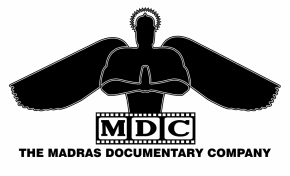The significance Siva Pradosam
|
|
The history of performing Pradosam for Lord Siva dates back to the early Hindu mythology.
The Devas and the Asuras were interested in acquiring and drinking the Amruth or Nectar. This would assure them of immortality. The nectar was hidden deep inside the oceans. Neither of them had the capabilities to extract the Nectar on their own. So they decided to work jointly and churn the ocean till the nectar emerged. The partnership was based on total distrust and each one was planning to cheat and deny the other the holy nectar. To churn the ocean, they requested one of the mountains to help them by acting as the churner. The celestial snake, Vasuki, was enlisted to become the rope. Vasuki endured great hardship while the churning was in progress. At one time, he spewed out a dark poison which was later named as halahalam by Lord Siva. The poison was so toxic that the Devas and Asuras were being rendered unconscious. The poison spread and was engulfing the world. The Siddhas, Caranas, Gandharvas, Yakshas and Maharshis ran to the feet of Lord Siva and requested Him to save the world. The Lord, in his compassion, decided to help them and gathered the poison and swallowed it. Before the poison could enter his body, Goddess Parvathi stopped the poison in the Lord's neck. The poison turned Lord Siva’s throat blue. This the reason why the Lord is also refered to a Neela Kanta or Blue Throat. The act of Lord Siva was performed in the period of Pradosam. Pradosam occurs twice every month, on the 13th moon day after the New Moon and after the Full Moon. This day is also referred to as Trayodashi. The time of the Pradosam is always one hour before Sunset till one hour after Sunset. During this time, Lord Shiva and Goddess Parvati are in a propitious mood and hence are easily pleased and grant whatever a sincere devotee asks. It is believed, worshipping one Pradhosham equals going to temple for 15 days, worshipping 11 pradosham equals seeing one Kumbhabhishekam. No rebirth for those worshipping 120 pradhosham. The Pradosam seva is an opportunity to remove karma or karmic energies that limit our potential in this current life. Lord Shiva has more influence over Saturn (Shani-dev) on this day and can cause Saturn to loosen or release some of the karmic bonds that limit us. The Shiva Purana states that one who performs abishkeam and pooja to Lord Shiva on Pradhosha will be blessed with wealth, children, happiness and honour. It is said that those praying to Shiva during the auspicious time of Pradhosha will be freed from sins. A Pradosha falling on a Monday is considered to be very auspicious. The Moon rules your mind and controls your emotions which is why many people are advised to wear the Moonstone to ease their anxiety and worries. The ruler of the Moon is Lord Shiva's wife, Goddess Parvati or Shaktidevi. Lord Nandi occupies a very vital place in front of Lord Shiva. Praying to Shiva, Shakti and Nandi on any day is wonderful, but praying to them on Soma Pradosham, with sincerity in your heart, destroys your negative karma and helps you to control your mind and in turn remove your anxieties. |

